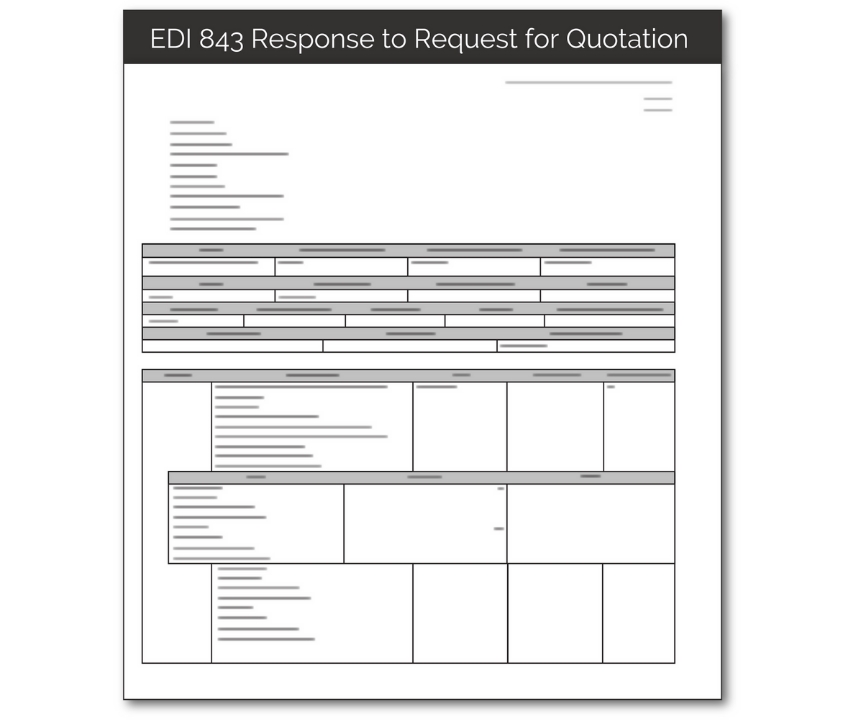EDI 843
Response to Request for Quotation

What is an EDI 843?
EDI 843, also known as a Response to Request for Quotation, is used by sellers to answer an incoming EDI 840 Request for Quotation. This electronic data interchange document allows the seller to provide details like product prices, delivery schedules, or other information about their goods and services.
EDI 843 documents follow the x12 format set by the American National Standards Institute (ANSI), a not-for-profit organization that regulates EDI formats in the U.S.
What are the Essential Components of EDI 843?
Depending on the request specifications of EDI 840, and EDI 843 transaction set will contain different details. Some common elements you can find on EDI 843 include:
- Seller details, such as vendor number, address, and contact information
- Product pricing information
- Product descriptions, such as dimensions and weights
- Delivery schedule and availability information
- Information regarding a specific service

How do I Use EDI 843?
EDI 843 can be generated automatically in response after compiling all the data needed to respond to an EDI 840 Request for Quotation. Based on the rules you’ve set in your system, your cloud-based EDI software will pull the corresponding data from your system, and alert you to any issues or fields you may need to address manually. The document is then sent back to the buyer, so they can decide if they want to purchase your goods and/or services.
After getting EDI 843, the buyer normally sends back an EDI 997 transaction to confirm receipt. If the information in the EDI 843 meets the buyer’s needs, they might also respond with an EDI 850 purchase order!
What are the Benefits of EDI 843?
Like many EDI transaction codes, EDI 843 can be automated to eliminate time-consuming manual data entry processes and therefore prevent errors. Additionally, because this document can be generated in minutes, the buyer gets the information they need quickly, which speeds them along towards a potential purchase.
EDI documents have the added benefit of enhanced security. Unlike emails and PDFs that can easily be hacked or intercepted, many EDI software providers use tools like HTTPs and FTPs protocols, at-rest and in-transit encryption, and user authentication to keep transaction details protected.
